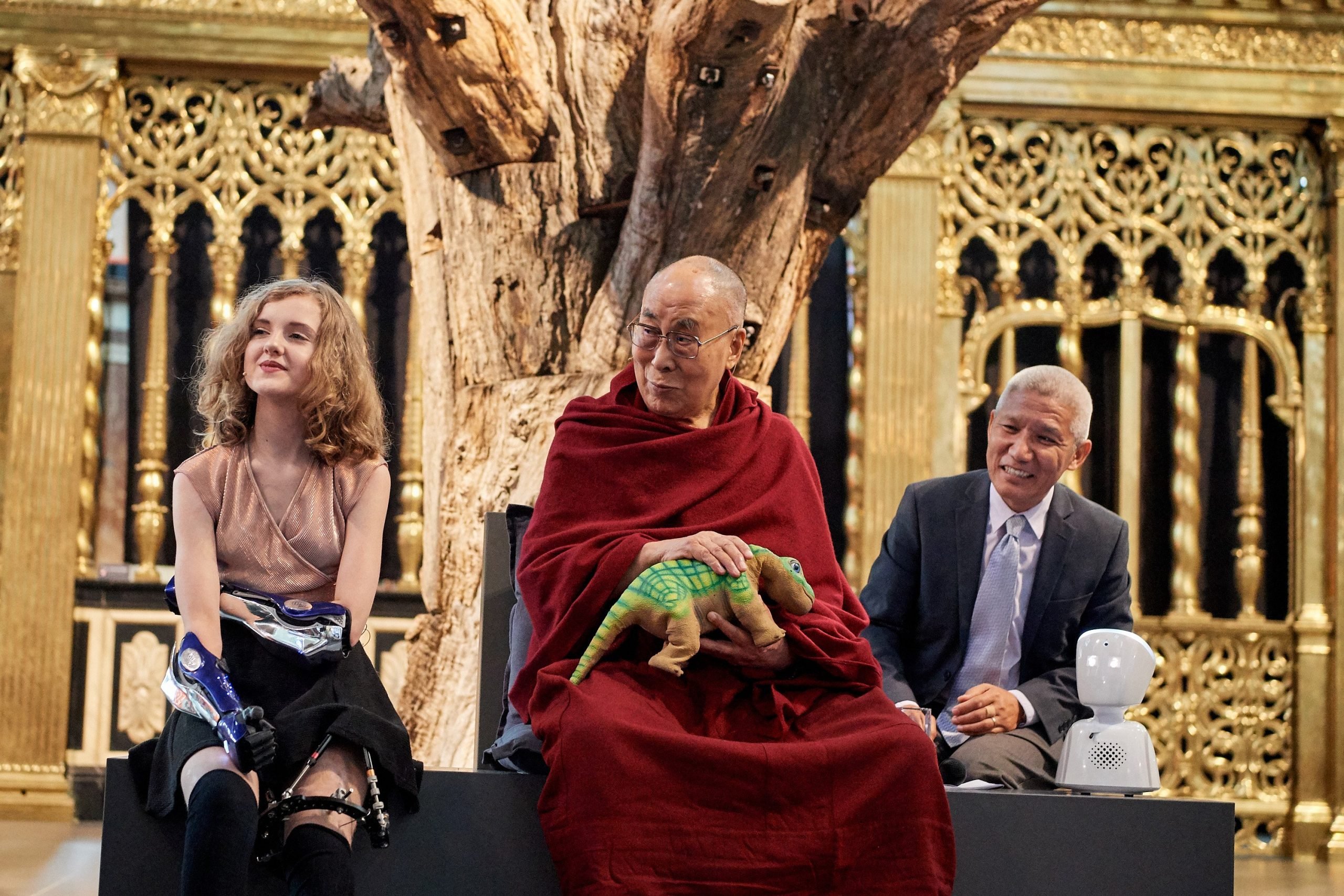
In a weekly column, alternately written by Maarten Steinbuch, Mary Fiers, Carlo van de Weijer, Lucien Engelen, Tessie Hartjes and Auke Hoekstra, Innovation Origins tries to find out what the future will look like. The six columnists, occasionally supplemented with guest bloggers, are all working in their own way on solutions for the problems of our time. So that Tomorrow will be Good. This Sunday it’s Maarten Steinbuch’s turn, looking back on his conversation with Dalai Lama. Here are all previous episodes.
The interface between spirituality and technocracy, what is the difference, and how do we control it? That was what my conversation with the Dalai Lama was about, on Saturday morning 15 September. He was in the Netherlands, on the occasion of the opening of an exhibition on Buddhism, in the Nieuwe Kerk in Amsterdam.
Our preparation started the previous Friday afternoon, with a dress rehearsal with all panel members in the Nieuwe Kerk. SingularityU-NL was co-organizer of this event and had put together a special panel. I was in the first panel, together with Tilly with her artificial arms and with Karen, a Norwegian entrepreneur who has a robot for tele-presence as a product. For example, when a child is ill at home, and can still be present in the classroom. I had travelled to Amsterdam with my wife and dino Pleo to talk about robotics and AI with the Dalai Lama.
When I arrived on stage, his eye fell immediately on my little dino. At the beginning of the conversation I put the dino on his lap and explained that if you touch and stroke the dino, it seems to make him happy. Us as humans too by the way. The Dalai Lama was gigglingly enthusiastic but pulled his tail hard. I hadn’t expected that.
The conversation was interesting, my question was well understood, namely how far can we go with robots: can they ever have consciousness or emotions? It’s about the balance between technological reasoning and spirituality. The Dalai Lama replied that there are many layers to human consciousness. Most of it is material, with the implication that one might ever be able to imitate it in a computer simulation or robot program. The deepest layer of our consciousness, however, according to the Dalai Lama, is what we could call the soul, ‘atma’ or ‘atman’ (Sanskrit): Breath of Life, the Universal Spirit in nature and in man. We can never grasp this in a piece of technology.
My second question was about the consequences of the increasing possibilities of learning algorithms. The Dalai Lama doubted whether it would be possible to recognize human emotions and intentions and challenged me to show him that. I know that this can and does exist to a greater or lesser extent, so perhaps I can show it some day in a demo to him. I found him open and curious on this subject. The full video recordings can be found here, and ‘my’ piece of 28 to 45 minutes.
After the session in church, we had lunch with the panel, together with among others one of the personal doctors of the Dalai Lama. Very interesting how much they do with herbs, and how they learn this in their training: every academic year in their medical training they have to go into nature for one month and look for herbs.
After lunch, the Dalai Lama came back to us and when he said goodbye he caressed the Pleo dino very tenderly again. When he came outside the church, and I walked just behind him, there were rows of people watching, many Tibetans as well. Some of them started to cry spontaneously. That moved me the most, I believe. I don’t know if robots will ever understand something like that.
 Dalai Lama in the Nieuwe Kerk in Amsterdam, photo (c) Adam Olivier
Dalai Lama in the Nieuwe Kerk in Amsterdam, photo (c) Adam Olivier
